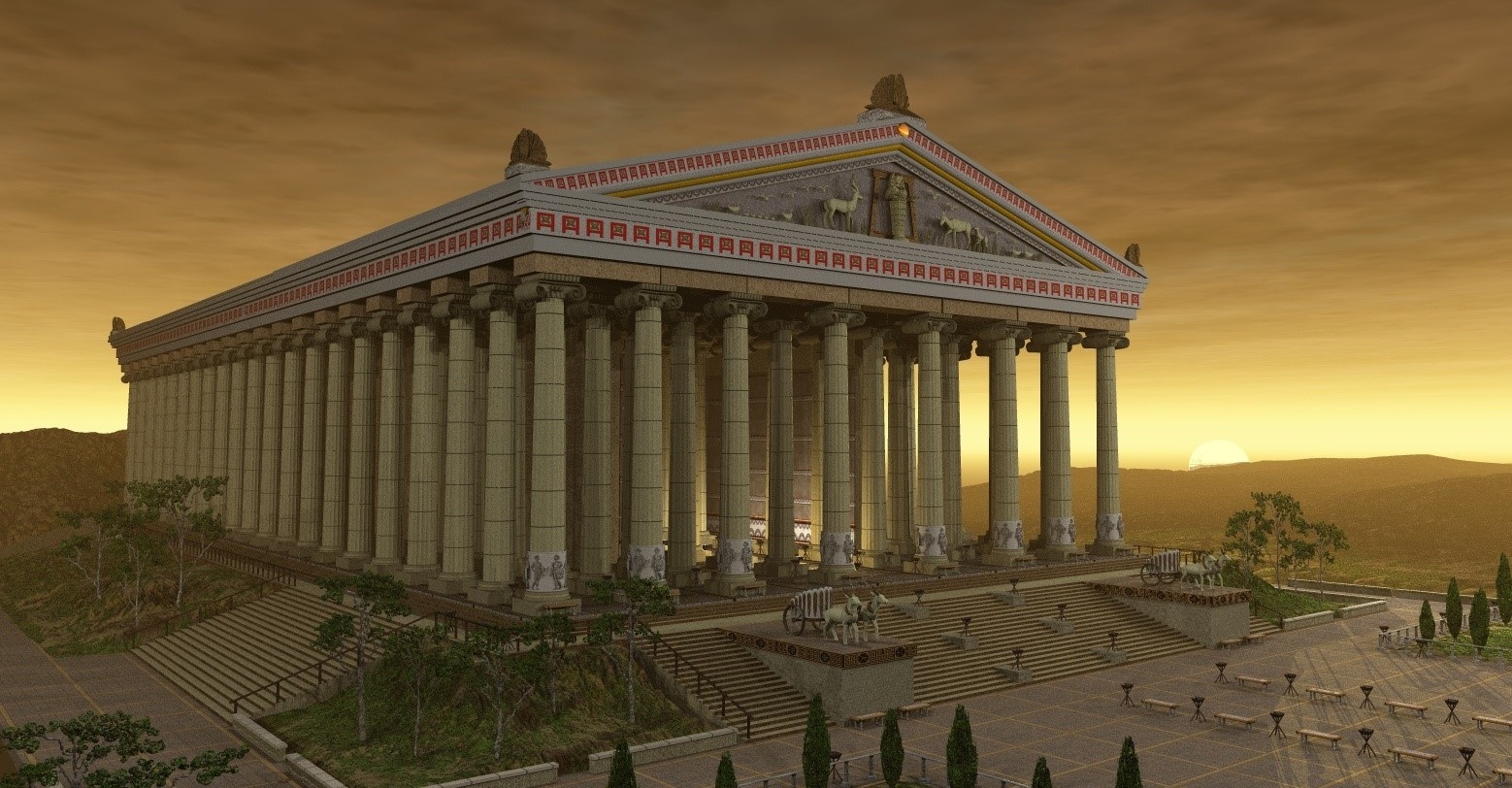The Seven Wonders of the Ancient World: Temple of Artemis at Ephesus (Turkey)
The Temple of Artemis at Ephesus: A Marvel of Ancient Architecture

Introduction
Nestled in the ancient city of Ephesus, Turkey, the Temple of Artemis stands as a testament to the grandeur and architectural ingenuity of the ancient world.
Revered as one of the Seven Wonders of the Ancient World, this magnificent temple dedicated to the goddess Artemis captivates visitors with its rich history, breath-taking design, and enduring legacy.
Historical Significance
Constructed in the 6th century BCE, the Temple of Artemis was a focal point of religious worship and cultural significance in the ancient Greek world.
Built to honour Artemis, the goddess of the hunt, wilderness, and childbirth, the temple served as a centre of pilgrimage and devotion, drawing worshippers from far and wide to pay homage to the divine.
Architectural Marvel
The Temple of Artemis was renowned for its unparalleled architectural splendour and monumental scale. Standing over 115 meters (377 feet) long and adorned with 127 marble columns, each standing at an impressive height of 18 meters (60 feet), the temple commanded awe and reverence from all who beheld it.
The elaborate sculptural decorations, including friezes depicting mythological scenes and intricate reliefs, added to the temple's allure and magnificence.
Cultural Hub and Economic Centre
Beyond its religious significance, the Temple of Artemis played a vital role in the social, cultural, and economic life of Ephesus and the surrounding region.
As a hub of religious activity and pilgrimage, the temple attracted merchants, artisans, and pilgrims, fostering a vibrant marketplace and cultural exchange. The prosperity and prominence of Ephesus as a flourishing metropolis owed much to the presence of the temple and the bustling activity it generated.
Enduring Legacy
Although the original Temple of Artemis was destroyed and rebuilt multiple times due to various conflicts and natural disasters, its legacy endures as a symbol of ancient Greek civilization and architectural achievement.
While only scant ruins remain at the site today, including a few reconstructed columns and fragments, the Temple of Artemis continues to inspire awe and admiration as a UNESCO World Heritage Site and a testament to humanity's artistic and spiritual aspirations.
Conclusion
In the annals of history, few monuments rival the majesty and significance of the Temple of Artemis at Ephesus.
From its origins as a sacred sanctuary dedicated to a revered goddess to its status as one of the Seven Wonders of the Ancient World, the temple stands as a testament to the enduring power of human creativity, devotion, and cultural heritage.
As visitors gaze upon its weathered remnants and contemplate its storied past, they are transported back in time to an era of myth and marvel, where gods and mortals converged in reverence and wonder.
References
- John Freely, The Western Shores of Turkey: Discovering the Aegean and Mediterranean Coasts 2004, p. 148; Clive Foss, Ephesus after antiquity: a late antique, Byzantine, and Turkish city, Cambridge University Press, 1979, pp. 86–89 & footnote 83.
- Antipater, Greek Anthology IX.58.
- Pausanias, Description of Greece 7.2.6–8.
- Bammer offers a critical re-appraisal of Hogarth's methods, findings and conclusions.Bammer 1990, pp. 137–160
- Bammer 1990, p. 142 noted some still earlier placements of stones, Mycenaean pottery and crude clay animal figurines, but warned "it is still to early to come to conclusions about a cult sequence."
- The flood is dated by fragmentary ceramics: Bammer 1990, p. 141.
- Bammer 1990, pp. 144, 153.
- see Kevin Leloux, "The Campaign Of Croesus Against Ephesus: Historical & Archaeological Considerations", in Polemos 21-2, 2018, p. 47–63 [1].
- Herodotus' statement to this effect is confirmed by the conjectural reading of a fragmentary dedicatory inscription, conserved in the British Museum (A Guide to the Department of Greek and Roman Antiquities in the British Museum 84).
- Pliny's Natural History, 16.79.213–16; Pliny's source was the Roman Mucianus, who thought that the cult image by an "Endoios" was extremely ancient, however. Endoios' name appears in late 7th-century Attic inscriptions, and Pausanias notes works attributed to him. Most importantly, the Ephesians of Mucianus' time maintained the tradition that a particular sculptor had created the remade image (LiDonnici 1992, p. 398).








































